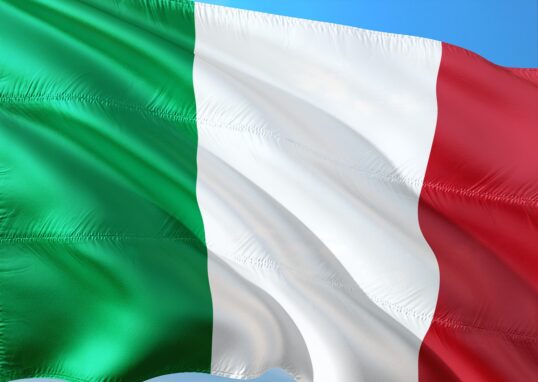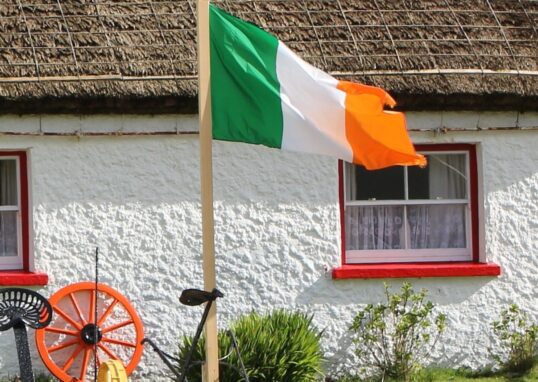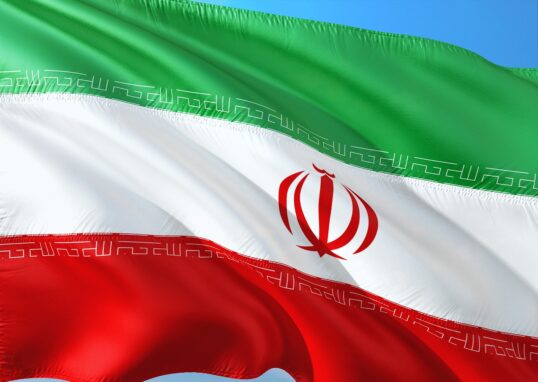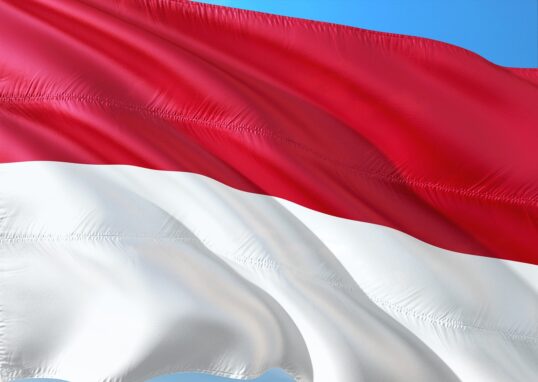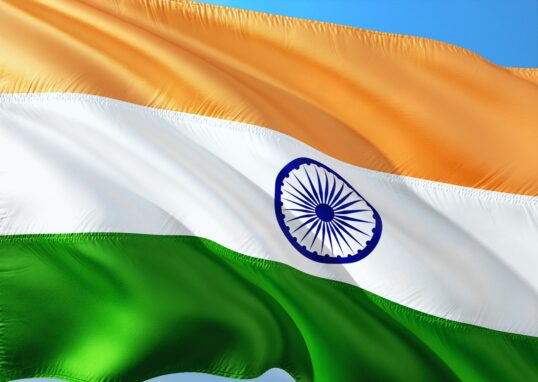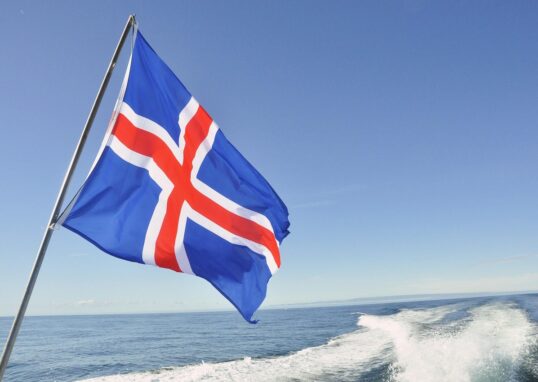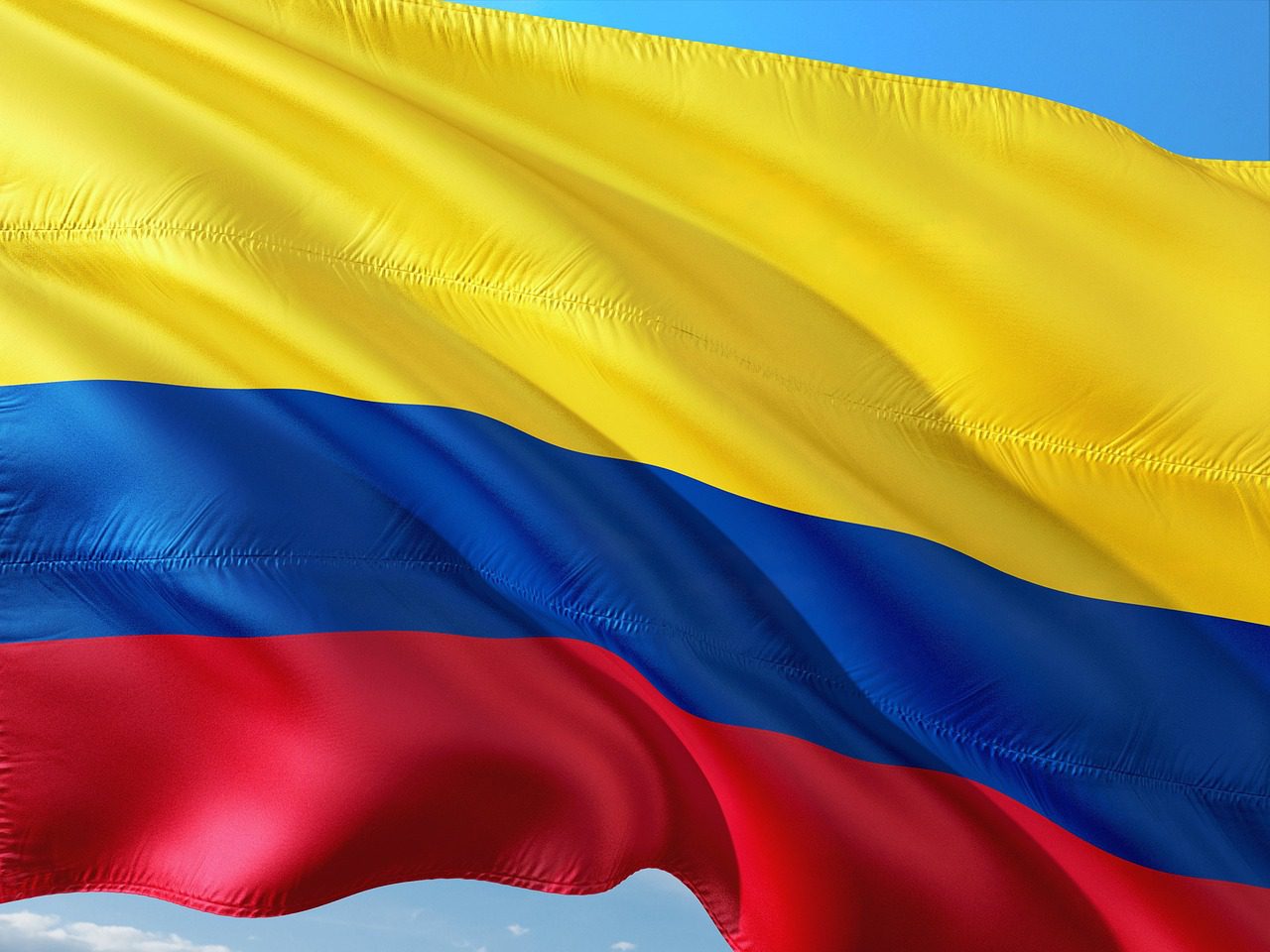
Colombia: The Heart of South America’s Spirit and Beauty
Colombia is a vibrant nation, a land of music, mountains, and enchantment. It sits in the northwestern corner of South America, along the Pacific Ocean and the Caribbean Sea. Colombia is famous for its people, as warm as sunshine, tropical shores, ancient cities, and vibrant culture. It is a country where technology and tradition reside side by side. From the towering Andes Mountains to the deep Amazon Rainforest, from the sunny Caribbean beaches to the vibrant cities of Bogotá, Medellín, and Cartagena, Colombia has everything a traveler could desire. During this in-depth journey, we will explore the history, culture, nature, attractions, and surrounding areas that make Colombia one of the world’s best nations.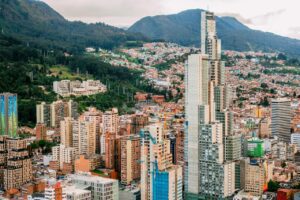
A Short History of Colombia
Colombia’s past began long before European settlers arrived. Native peoples, the Muisca, Tairona, and Quimbaya, occupied the land. They formed good societies, traded gold, and farmed. They left outstanding pieces of work, like gold jewelry and ceramics still seen in museums today. Spanish explorers arrived on the shore of Colombia in 1499. They began to establish colonies and settlements. Gonzalo Jiménez de Quesada founded the city of Bogotá in 1538, which later became the capital. Colombia was a part of the Spanish Empire for almost 300 years. At this time, the Spanish brought African slaves to work in mines and plantations. The blending of indigenous, African, and European cultures gave Colombia its unique identity. Colombia, like other South American countries, struggled for independence in the early 19th century. Colombia was commanded by Simón Bolívar and became an independent Spanish nation in 1819. It briefly existed as part of Gran Colombia, which included Venezuela, Ecuador, and Panama. Later, the countries divided and formed modern-day Colombia. The 20th century brought it to issues like political turmoil and local wars, but the Colombian people persevered. Today, it is a nascent democracy with a name for peace, prosperity, and loveliness.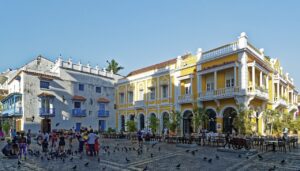
Geography and Climate
Colombia has one of the world’s most geographically diverse nations. It is the only South American country bordering two oceans — the Caribbean and the Pacific Ocean. It has mountains, forests, deserts, and plains in its territory. The country is physically separated into five major regions:
- Andean Region – mountainous, valley-like, and plain-like.
- Caribbean Region – renowned beaches, coral reefs, and colonial towns.
- Pacific Region – blessed with rainforests, rivers, and wildlife.
- Orinoquía Region (Llanos) – vast grassland perfect for cattle ranching.
- Amazon Region – dense jungle with native peoples and wild animals.
The climate changes with altitude. The lowlands are tropical and the mountainous areas are cooler. Because of this, tourists can enjoy summer, spring, and winter weather all in a single day, depending on where they go.
Major Cities of Colombia
Bogotá – The Capital of Culture
Bogotá is Colombia’s capital and largest city. It is situated in the Andes Mountains at over 2,600 meters above sea level. The city is a mix of colonial streets, colonial architecture, and lush parks. The city center of Bogotá is La Candelaria, its old town. The town is full of museums, cafes, churches, and red-roofed top houses painted in bold colors. The Plaza de Bolívar, the city’s central square, is lined with historic buildings like the Cathedral Primada and the Capitolio Nacional. One of the most prominent attractions is the Gold Museum (Museo del Oro), which possesses one of the world’s largest collections of pre-Columbian gold. Another personal favorite is Monserrate Hill, which offers breathtaking views of the whole city. Once darkness falls, Bogotá comes alive with music, food, and dance. The Zona Rosa and Parque 93 districts are lined with restaurants, bars, and shopping malls.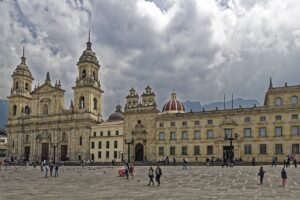
Medellín – The City of Eternal Spring
Medellín, which was once known for its gloomy past, is the most innovative and welcoming city in South America today. It lies in a beautiful valley and has a pleasant climate year-round, so it’s nicknamed “City of Eternal Spring.” It’s famous for its transformation. Modern transport, parks, and street art make it one of Latin America’s best cities to live in. Tourist attractions include Plaza Botero, where Colombian sculptor Fernando Botero has works installed. The Metrocable, a cableway, raises riders above the city for stunning views. Medellín’s Feria de las Flores (Flower Festival), one of Colombia’s most colorful festivals, is held in August. Streets are filled with flower parades, music, and smiles.
Cartagena – The Jewel of the Caribbean
Cartagena is one of the most beautiful and romantic cities globally. It is located on Colombia’s Caribbean coast and is bordered by ancient walls and 16th-century forts constructed to safeguard it from pirates. The Cartagena Old Town is a UNESCO World Heritage Site. Its cobblestone streets, brightly colored houses, and flower-covered balconies create an air of a fairy tale. Major attractions are the Castillo San Felipe de Barajas, a humongous fortress, and the Clock Tower Gate, the main gateway to the old town. Nearby is Bocagrande, a trendy suburb of luxury hotels and beaches. Visitors can also take boat tours to the Rosario Islands, a group of tropical islands renowned for crystal-clear waters and coral reefs.
Cali – The Capital of Salsa
Cali is renowned worldwide as the world’s Salsa capital. This south-western Colombia town is all rhythm and dance. It has friendly people, and the music never stops. Cali has many dance schools and festivals. Feria de Cali, in December, hosts thousands of travelers to the city with parades, concerts, and dance festivals. Apart from music, the city also features beautiful parks and churches like San Antonio Hill, where sunsets are guarded over the city.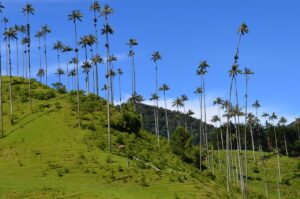
Barranquilla – City of Carnival
Barranquilla, a coastal city in the Caribbean, has the famous Barranquilla Carnival, which was declared by UNESCO as a Masterpiece of Oral and Intangible Heritage of Humanity. February carnival is full of music, costume, and dance. It reflects the blending of African, European, and Indigenous influences. Apart from carnival season, Barranquilla offers beaches, museums, and the Malecon del Río, a scenic riverwalk along the Magdalena River.
Santa Marta – Gateway to Paradise
Santa Marta lies close to the Tayrona National Natural Park, one of the most beautiful places in Colombia. There, you can hike through the jungles, swim in isolated beaches, and meet Indigenous tribes. Santa Marta is also the final resting place of Simón Bolívar, South America’s liberator. His mansion, La Quinta de San Pedro Alejandrino, has been made into a museum and monument.
Nature and Wildlife
Colombia is the most biodiverse nation on Earth. It is home to over 50,000 species of plants and animals, many having nowhere else on Earth to survive.
Amazon Rainforest
Along the southern Colombia region lies part of the grand Amazon Rainforest. The environment around Leticia, along the Peruvian and Brazilian borders, abounds with wildlife, including monkeys, pink dolphins, and exotic birds. Visitors can stay in eco-lodges, take Amazon River boat tours, and visit Indigenous villages.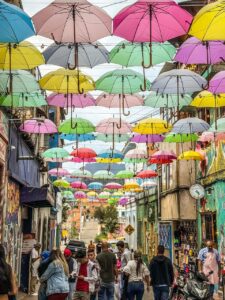
Coffee Triangle (Eje Cafetero)
Coffee plantations are typically located in the central region of Colombia. Towns like Salento, Manizales, and Pereira are surrounded by green hills and coffee plantations. Tourists learn about how coffee is grown and experience beautiful sceneries that are covered with wax palm trees, which are the national trees of Colombia.
Tayrona National Park
Located near Santa Marta, the park is a combination of mountains, rainforest, and beaches. Beaches like Cabo San Juan are some of the Caribbean’s most beautiful beaches. It is also home to the Kogi people, who live their traditional lifestyle.
Caño Cristales
In the Meta area is Caño Cristales, nicknamed the “River of Five Colors.” In June and November, red, yellow, green, blue, and pink algae bloom along the riverbed, creating a magical scenario.
San Andrés and Providencia Islands
These Colombian Caribbean islands are surrounded by turquoise waters and coral reefs. They are perfect for diving, snorkeling, and sunbathing in palm trees.
Culture and People
Colombia’s greatest treasure is its people. Colombians are renowned for their welcoming nature, friendliness, and happiness. Family and society are of utmost importance. The culture is a mix of Indigenous, Spanish, and African, evidenced in festivals, music, and cuisine.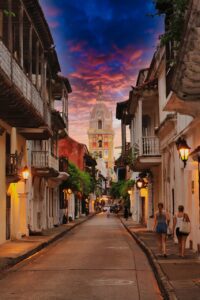
Music and Dance
Music is the heart of Colombian life. Every region has its rhythm:
- Cumbia and Vallenato from the Caribbean coast. Salsa from Cali. Reggaeton and Champeta in city cities. Well-known artists like Shakira, Carlos Vives, and J Balvin have popularized Colombian music worldwide.
Food
Colombian food is abundant and diverse. Each region has its own specialties:
- Bandeja Paisa – a massive plate that contains rice, beans, meat, egg, and plantains.
- Arepas – corn cakes served with cheese or butter.
- Ajiaco – chicken and potato soup, which is renowned in Bogotá.
- Empanadas – baked or fried pastry filled with meat or cheese. There are lots of fruits as well. Mangoes, passion fruit, and guavas can be found in the local marketplaces.
Surrounding Attractions and Neighboring Areas (Detailed)
Colombia is bordered by five countries — Venezuela, Brazil, Peru, Ecuador, and Panama. All of the surrounding regions provide various travel opportunities for outings.
Venezuela
To the east, Venezuela borders Colombia’s massive Llanos plains. The area is renowned for its wildlife and cowboys. Tourists in great numbers travel from one country to the other to see natural parks as well as rivers.
Brazil
In the south, Colombia shares a border with Brazil in the Amazonian rainforest. Leticia is a border city between the two countries. Visitors can travel between Colombia, Brazil, and Peru by boat, witnessing the different cultures of the Amazon.
Peru
South along the Amazon River, Peru offers similar jungle tours and ancient sites like Machu Picchu, easily reachable by plane from Colombia.
Ecuador
To the southwest, Colombia is similarly cultured and natural to Ecuador. Quito and Otavalo are close enough for the overland trip, making it a popular route for tourists traveling to the Andes.
Panama
Northwest of Panama is the connection between Colombia and Central America. The two countries are divided by dense jungle referred to as the Darién Gap, but travelers can reach Panama by air or sea. Along the coast near the border is the San Blas Islands, island heaven near the Caribbean coast of Colombia.
Tourism and Safety
Colombia is now one of Latin America’s most popular tourist destinations. Safety, infrastructure, and tourism facilities have all been upgraded by the government. Travelers can go from city to city easily by airplane, bus, or train. Bogotá, Medellín, and Cartagena are well connected by major airlines with cities worldwide. Eco-tourism and cultural tourism are expanding rapidly. Tourists are recommended to see the sights accompanied by guides, observe customary behavior, and appreciate the welcoming atmosphere of the country.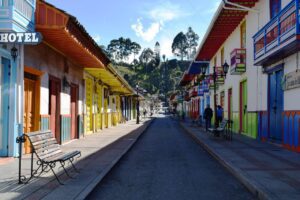
Why Visit Colombia
Colombia is a country of contrasts — modern and old, wild and welcoming. It has something for all the visitors:
- History lovers can explore colonial towns. Nature lovers can hike through mountains and rainforests.
- Sunbathes can enjoy golden beaches. Adventure seekers can dive, climb, or hike through national parks. Above all, Colombia’s happy attitude, lively streets, and alive culture leave it unerasable.
Conclusion
Colombia is not just a country; it is an experience, joy, and beauty. From the cobblestone streets of Cartagena to the green valleys of the Coffee Triangle, from the Amazon jungle to the Andean peaks, each location tells a story. Its music, people, and landscapes are blended in a symphony that wins the heart of everyone who visits. So when you arrive in Colombia, you don’t see a location — you feel its rhythm, taste its flavor, and become a part of its movement. It is the heart of South America.

